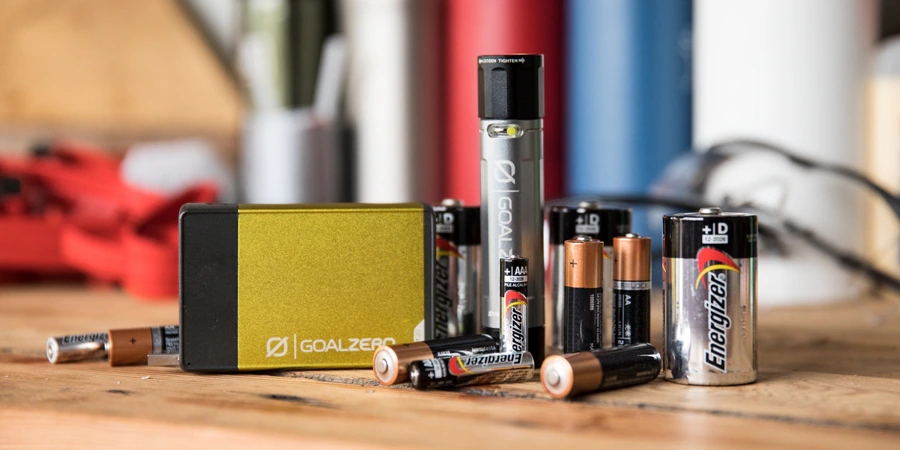The Ultimate Guide to Batteries: Powering Our Lives

Batteries are an integral part of modern life, powering everything from household devices to electric vehicles. With advancements in technology, the types of batteries available today are diverse, each designed for specific applications. This guide explores the different types of batteries, their uses, and tips for selecting and maintaining them.
Understanding Battery Basics
1. What is a Battery?
A battery is a device that stores chemical energy and converts it into electrical energy through electrochemical reactions. It consists of one or more electrochemical cells, which contain electrodes (anode and cathode) and an electrolyte.
2. How Batteries Work
When a battery is connected to a circuit, a chemical reaction occurs between the electrolyte and electrodes, producing a flow of electrons. This flow generates electrical energy, which powers the connected devices.
Types of Batteries
Batteries can be categorized into two main types: primary (non-rechargeable) and secondary (rechargeable).
1. Primary Batteries
Primary batteries are designed for single-use and cannot be recharged. Common examples include:
- Alkaline Batteries: Widely used in household items like remote controls and toys, alkaline batteries are known for their long shelf life and good performance.
- Lithium Batteries: These batteries offer a higher energy density and are often used in cameras, watches, and some medical devices. They perform well in extreme temperatures and have a long shelf life.
- Zinc-Carbon Batteries: Typically used in low-drain devices, such as flashlights and clocks, zinc-carbon batteries are more affordable but have a shorter lifespan compared to alkaline batteries.
2. Secondary Batteries
Secondary batteries can be recharged and used multiple times. They are commonly found in portable electronic devices and electric vehicles. Key types include:
- Nickel-Cadmium (NiCd): Known for their durability, NiCd batteries are often used in power tools and rechargeable household products. However, they suffer from “memory effect,” which can reduce their effective capacity over time.
- Nickel-Metal Hydride (NiMH): These batteries are more environmentally friendly and have a higher capacity than NiCd. They are commonly used in hybrid vehicles and digital cameras.
- Lithium-Ion (Li-ion): One of the most popular rechargeable battery types, Li-ion batteries power smartphones, laptops, and electric vehicles. They offer a high energy density, lightweight design, and no memory effect.
- Lithium Polymer (LiPo): Similar to Li-ion but with a flexible, polymer-based electrolyte, LiPo batteries are commonly used in drones and radio-controlled devices. They can be made in various shapes and sizes.
Choosing the Right Battery
1. Consider the Device
The first step in selecting a battery is understanding the device it will power. Check the device’s specifications to determine the required battery type and size.
2. Evaluate Battery Life
Different batteries offer varying lifespans and performance levels. Consider how often you will use the device and choose a battery that balances performance with cost.
3. Think About Rechargeability
Decide whether you want a single-use battery or a rechargeable option. While rechargeable batteries may have a higher upfront cost, they can save money in the long run and are better for the environment.
4. Check for Environmental Considerations
Consider the environmental impact of the batteries you choose. Some battery types, like NiCd, contain toxic materials and should be disposed of properly. Look for environmentally friendly options, such as NiMH or lithium-based batteries.
Battery Maintenance Tips
1. Store Properly
Store batteries in a cool, dry place to prolong their life. Avoid exposing them to extreme temperatures or humidity, as this can affect performance.
2. Regularly Check Expiry Dates
Batteries have expiration dates. Regularly check and replace batteries in devices that are not used frequently to avoid leakage and damage.
3. Charge Correctly
For rechargeable batteries, follow the manufacturer’s guidelines for charging. Avoid overcharging, which can shorten battery life. If possible, use the charger that came with the battery or device.
4. Dispose Responsibly
Always dispose of batteries in accordance with local regulations. Many areas have designated recycling centers for batteries, preventing harmful chemicals from entering the environment.
The Future of Batteries
As technology advances, the future of batteries looks promising. Research is ongoing into new materials and technologies that could lead to more efficient, longer-lasting, and environmentally friendly batteries. Innovations like solid-state batteries and sodium-ion batteries hold the potential to revolutionize energy storage and usage.
Conclusion
Batteries play a crucial role in powering our daily lives, from simple household gadgets to complex electric vehicles. Understanding the different types, how to choose the right one, and proper maintenance can help you make informed decisions, ensuring your devices remain powered and ready to go. As we move towards a more energy-conscious world, the importance of efficient and sustainable battery technology will continue to grow, shaping the future of energy consumption.



